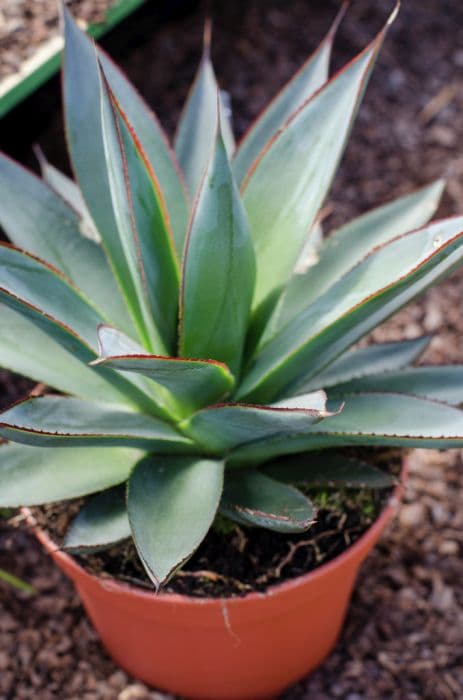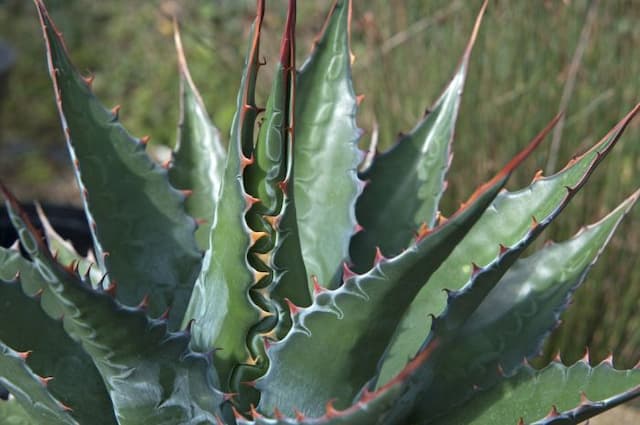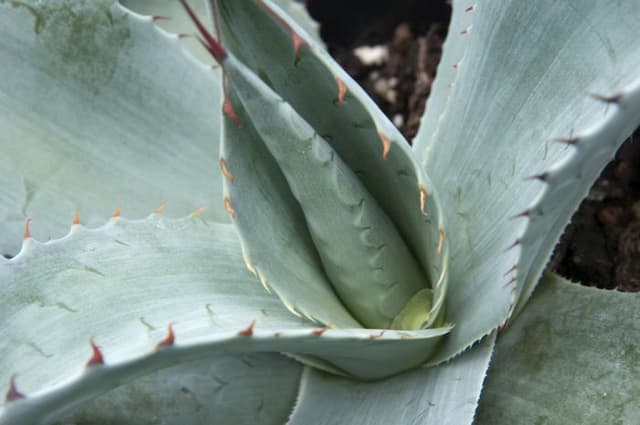Hyacinth 'Delft Blue' Hyacinthus orientalis 'Delft Blue'

ABOUT
'Delft Blue' is a bulbous perennial to 30cm in height, with glossy green leaves and shapely spike-like racemes of fragrant, soft mid-blue flowers
About this plant
 Names
NamesFamily
Asparagaceae.
Synonyms
Common Hyacinth, Garden Hyacinth, Dutch Hyacinth.
Common names
Hyacinthus orientalis 'Delft Blue'.
 Characteristics
CharacteristicsLife cycle
Perennials
Foliage type
Deciduous
Color of leaves
Green
Flower color
Blue
Height
0.6-1 feet (15-30 cm)
Spread
0.5 feet (15 cm)
Plant type
Bulb
Hardiness zones
4-8
Native area
Eastern Mediterranean
Benefits
 General Benefits
General Benefits- Aesthetic Appeal: Hyacinth 'Delft Blue' features striking blue flowers that add color and visual interest to gardens, containers, and indoor settings.
- Fragrance: The flowers emit a strong, pleasant fragrance that can perfume an entire room or garden area.
- Early Spring Blooms: This plant is among the first to bloom in spring, providing early color after the winter months.
- Attracts Pollinators: The blooms attract bees and other pollinators, which are important for the health of gardens and the environment.
- Ease of Growing: Hyacinth 'Delft Blue' is easy to grow and can thrive with minimal care, making it suitable for novice gardeners.
- Forced Blooms: Bulbs can be "forced" to flower early indoors, allowing for control over blooming time for display purposes.
- Versatility: Suitable for planting in the ground, in pots, or for cut flowers in floral arrangements.
- Symbolism: Often associated with peace and tranquility, it can be a meaningful addition to a garden or as a gift.
- Long Bloom Duration: The blooms last for several weeks, offering a prolonged period of enjoyment.
 Medical Properties
Medical PropertiesThis plant is not used for medical purposes.
 Air-purifying Qualities
Air-purifying QualitiesThis plant is not specifically known for air purifying qualities.
 Other Uses
Other Uses- Crafting Potpourri: Dried 'Delft Blue' hyacinth petals can be included in homemade potpourri mixtures for a unique and pleasant fragrance.
- Colorant: The intense blue color of the 'Delft Blue' hyacinth can be used to naturally dye textiles or even in the making of inks.
- Educational Use: 'Delft Blue' hyacinths can be used as a tool in schools or educational programs to demonstrate plant growth and bulb development.
- Art Projects: Pressed 'Delft Blue' flowers can be used in art projects, such as botanical prints or in creating decorative bookmarks.
- Seasonal Celebrations: The flowers are often used to create festive centerpieces for springtime celebrations like Easter due to their vibrant color and association with the season.
- Perfumery: The fragrance of 'Delft Blue' hyacinths can be captured and used in homemade perfumes or scented sachets.
- Photography: The striking appearance of 'Delft Blue' hyacinths makes them a popular subject for botanical photographers and hobbyists.
- Bee Friendly Gardens: Planting 'Delft Blue' hyacinths can attract bees and help support pollinator populations.
- Wedding Decor: Because of their attractive look and scent, 'Delft Blue' hyacinths can be incorporated into wedding floral arrangements and bouquets.
- Memory Gardens: 'Delft Blue' hyacinths are sometimes planted in memory gardens as they symbolize peace, commitment, and beauty.
Interesting Facts
 Feng Shui
Feng ShuiThe hyacinth is not used in Feng Shui practice.
 Zodiac Sign Compitability
Zodiac Sign CompitabilityThe hyacinth is not used in astrology practice.
 Plant Symbolism
Plant Symbolism- Beauty: The 'Delft Blue' hyacinth, with its striking blue blossoms, is often associated with beauty and aesthetic appreciation.
- Constancy: Historically, the hyacinth represents consistency of emotion, loyalty, and the desire to stay constant in a loved one's life.
- Games and Sports: In Greek mythology, the hyacinth is connected to Apollo and the young boy Hyakinthos; it symbolizes activities associated with games and sports, potentially due to the myth of its creation during a discus throwing contest.
- Sorrow: Although beautiful, the hyacinth can sometimes be a symbol of sorrow or apology, possibly stemming from the tragic tale of Hyakinthos in Greek mythology, for whom the flower is named.
- Jealousy: The hyacinth can occasionally suggest jealousy, as it is said to have sprung from the blood of Hyakinthos, whom both Apollo and Zephyr desired, the latter's envy leading to the boy's untimely death.
- Pride: The hyacinth's stately appearance has led it to be associated with pride, in the positive sense of self-respect and dignity.
- Playfulness: The dense clusters of flowers and vibrant color of the 'Delft Blue' hyacinth may evoke a sense of playfulness and joy.
- Rebirth: Often blooming in the spring, hyacinths can symbolize rebirth or renewal, which is a common theme during the season it blooms in.
 Water
WaterHyacinth bulbs, particularly Delft Blue Hyacinths, need moderate watering during active growth periods. Typically, this includes watering thoroughly when the top inch of soil feels dry to the touch, which can be roughly once a week. The goal is to maintain evenly moist soil without waterlogging, as too much water can rot the bulbs. During the plant's dormant period, after the leaves have yellowed and died back, watering should be reduced significantly. Water with approximately 16 ounces to keep the soil lightly moist every other week, adjusting for climate and indoor conditions.
 Light
LightDelft Blue Hyacinths prefer bright, indirect light to thrive. The best spot for these bulbs is in a well-lit room where they receive filtered sunlight, away from direct, harsh rays that can scorch their leaves. A north or east-facing windowsill is often ideal for providing the necessary light conditions. They can also bloom in artificial light if natural bright light is not available.
 Temperature
TemperatureDelft Blue Hyacinths prefer cooler temperatures and will thrive in conditions between 60 and 70 degrees Fahrenheit. It's important to keep the bulbs away from heat sources and hot temperatures which can cause them to wither. They can survive brief periods outside of this range, but the ideal temperature for robust blooms is within these cooler temperatures. The bulbs are hardy to a minimum outdoor temperature of around 25 degrees Fahrenheit, but it's safest to not let indoor temperatures drop below 50 degrees Fahrenheit.
 Pruning
PruningPruning Delft Blue Hyacinths is mainly about deadheading spent flowers to encourage the plant to direct energy into next year's growth rather than seed production. After blooming, cut back the flower stalks to the base but leave the foliage intact until it naturally browns and withers. This typically occurs just once a year, after the spring bloom period. The best time for pruning is when the flowers have finished blooming and are no longer visually appealing.
 Cleaning
CleaningAs needed
 Soil
SoilThe best soil mix for the Delft Blue hyacinth should be rich, well-drained, and loamy with a slight preference for alkalinity, aiming for a pH of about 6.5 to 7.5. Incorporate organic matter such as compost or peat moss to improve soil structure and nutrients.
 Repotting
RepottingDelft Blue hyacinths generally do not require frequent repotting and should be repotted only when the bulbs have multiplied and are crowded, typically every 2-3 years.
 Humidity & Misting
Humidity & MistingHyacinths, including the Delft Blue variety, prefer moderate humidity levels; however, they are not particularly demanding in terms of ambient humidity and can adapt to indoor environments well.
 Suitable locations
Suitable locationsIndoor
Place in bright, indirect light and keep soil moist.
Outdoor
Plant in fall, full sun to partial shade, well-drained soil.
Hardiness zone
4-8 USDA
 Life cycle
Life cycleThe life of the 'Delft Blue' Hyacinth begins when its bulb, which is a storage organ containing embryonic plant material, is planted in well-drained soil during the fall. After a period of winter chilling, essential for breaking dormancy, the bulb sprouts in early spring, sending up green shoots and then flower stems bearing dense spikes of fragrant, blue flowers. Following the flowering period, the blooms fade and the plant enters a foliage phase, where the leaves photosynthesize to replenish the bulb's energy reserves. As the temperatures rise, the foliage turns yellow and withers, marking the end of the growth cycle and the start of the bulb's dormancy during the hot summer months. During dormancy, the bulb survives off the energy it stored during the active growth period. When temperatures cool down in the fall, the cycle is ready to begin anew with the bulb potentially producing offsets, leading to the growth of new plants.
 Propogation
PropogationPropogation time
Spring
The most popular method of propagating the Hyacinth 'Delft Blue' is through division of the bulbs, typically carried out in late summer after the foliage has died back. To propagate, carefully lift the mature bulbs from the soil and gently separate the small offset bulbs, which are commonly referred to as "bulblets," that have formed at the base of the parent bulb. These bulblets can be replanted immediately at a depth of approximately 6 inches (15 centimeters) into well-draining soil, taking care to space them about 4 inches (10 centimeters) apart. It's important to ensure that the soil remains moderately moist but not waterlogged throughout the growing season to encourage proper rooting and bulb development. By the following spring, these bulblets should have established themselves enough to produce their own blooms.









